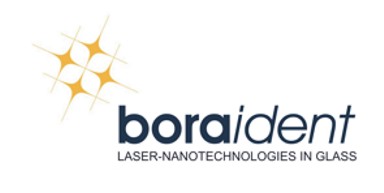
Hightech glass with fingerprint

Glass is a high-tech product. It has long-since not only been used for everyday objects such as windows or drinks bottles. Modern glass plays an important role in the construction industry, medicine and the chemical industry; it is made into touch-sensitive surfaces of mobile phones or delicate optical lenses. Because not all glass is created equal, the marking or identification of different glass plays an important role. Together with boraident GmbH, the Fraunhofer IMWS is working on new solutions to the problem.
boraident GmbH in Halle (Saale) develops products for customer-specific applications on glass and other transparent media. One of the focal areas of the mid-sized company’s work is laser markings. In a project that will last until 30 September 2018, the Fraunhofer IMWS working together with boraident would like to develop new technology for marking glass surfaces.
Such markings are suitable, for example, to place the mark of the glass manufacturer on the glass or to increase protection against forgery. Marking plays an important role in the manufacturing process: Text, number, logos, barcodes or QR codes can be used to identify at any point in the production, which glass is in which position or in which processing step. The marking gives each glass its own unmistakeable individual fingerprint, so to speak.
The marking can be made on the surface or even inside the glass. Because glass is a very smooth and non-absorbent material, it is not very suitable at all for printing, other solutions are used which must also ensure that the glass is not damaged by the marking. The project partners want to develop innovative solutions for this. They are aiming for optimized visibility and high long-term stability of the marking, the »fingerprint« should also be machine readable. To this end, both the applied markings and the interface with the substrate will be examined using microstructure diagnostics.


